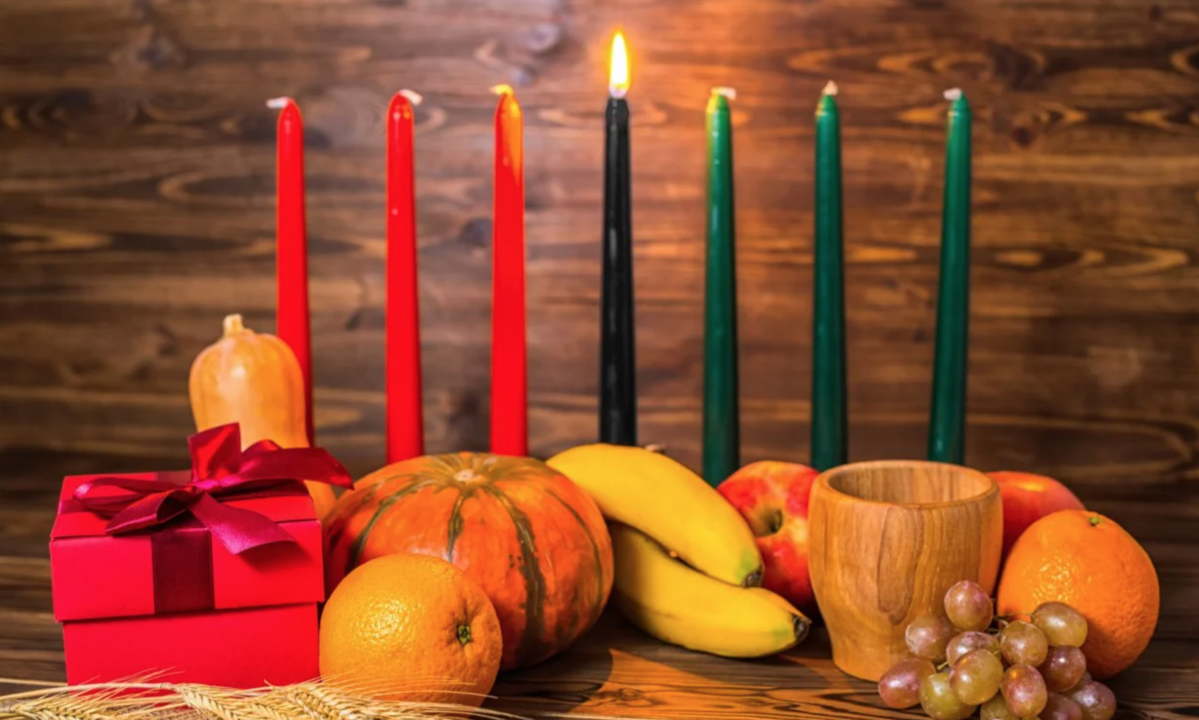By Leslie D.W. Jones
As we move towards 2022 many African-American families are celebrating Kwanzaa, a holiday that has a connection to the continent of Africa, but is distinctly American. The seven principles of Kwanzaa tie directly into the nearly 200 year history and culture of Historically Black Colleges and Universities.
Day One, December 26: Umoja (unity)
With over 100 HBCUs in over 20 states, territories and districts it would be easy to think that they are not connected. Despite their unique characteristics and traditions HBCUs still remain one family. Unlike any major athletic conference where rivalries carry on, HBCU rivalries only exist on the surface and are quickly put aside to support the other. Consider the outpouring of support Bennett received from other HBCUs in its fundraising pursuit or the love Coach Prime (Deion Sanders) receives-once the game is over- for the attention that has been placed on HBCU athletics. When one wins, we all win.
Day Two, December 27: Kujichagulia (self-determination)
The establishment of HBCUs is the perfect example of the striving of Black men and women for excellence, equality and empowerment. This striving led to the establishment and continuation of what are now more than 100 institutions of higher learning, still producing an outsized amount of Black professionals across every field. HBCUs began due to the desire of 4million black people to become educated; Fisk University alumnus W.E.B. Dubois wrote “in a single generation they…wiped out the illiteracy of the majority of black people in the land.”
Day Three, December 28: Ujima (collective work and responsibility)
When we come together our success is unlimited. HBCUs continue to produce a large percentage of Black teachers, doctors, ministers, entrepreneurs, generals, musicians, lawyers, judges, veterinarians, inventors, architects, engineers. This is despite the large-scale underfunding provided them and without the consistent multimillion dollar donations given to many historically white colleges. While being less than 3% of all degree-granting institutions, HBCUs produce almost 20% of all African-American graduates and 25% of African-American STEM graduates. Many of the ‘firsts’ whether it is the first to perform an operation, the first to be a librarian, the first to becomeVice President of the United States–are graduates of Historically Black Colleges and Universities. When we come together…what can’t we do?
Day Four, December 29: Ujamaa (cooperative economics)
Perhaps one of the most important principles for HBCUs is ujamaa. The need to financially support our colleges continues to be great. While we have seen unprecedented donations in the past two years, we still all must come together to support HBCUs by giving back. One need not feel that only large donations matter– small dollars add up to big dollars. Those small donations also increase alumni giving rates. A $5 monthly donation by every living alumnus would not hurt the pocketbook, but would get attention that could lead to the support of those who have more to give. #alldollarsmatter
Day Five: December 30: Nia (purpose)
Since 1837 HBCUs have remained dedicated to the purpose of educating the descendants of slaves and those of the diaspora, to ‘building, developing, and defending our community, its culture, and history,’ as the Kwanzaa principle is explained. That role has not wavered even though HBCUs enroll diverse populations of students. While many question the necessity of Historically Black Colleges and Universities, the push against teaching a complete American history, the push against voting access and the continued struggles faced by people of color in the United States, despite all the significant progress, is an indication of the continued need for HBCUs and their purpose.
Day Six: December 31: Kuumba (creativity)
Some of our best known creatives have come out of Historically Black Colleges and Universities. HBCUs have some of the top music and art programs in the country. Campuses are known for trend-setting students, the sounds of marching bands and museums that house some of the best collections of Black art in the nation; public art can be found on campuses as well. The academic field of ‘Black Art’ was established on the campus of an HBCU and the work produced by alumni can be found in museums and collections across the world. And that creativity has not gone unrewarded: HBCUs boast Nobel Prize, Pulitzer Prize, Grammy and Academy Award winners among their alumni. It would be difficult to go a day without interacting with the work of a Black creative who was trained at an HBCU.
Day Seven: January 1: Imani (faith)
It was faith that led men & women like Mary McLeod Bethune, Isaac Lane, William Savery and Elizabeth Evelyn Wright to establish schools to educate former slaves and their children. Faith in education being a path towards true independence. Faith in education providing new opportunities. Faith in education lifting the veil of ignorance for millions of recently freed people and their descendants. About half of the HBCUs still in existence were established by black men and women, including Black churches and Black legislators whose work led to the funding of colleges that still continues. As Bethune stated, ““I plunged into the job of creating something from nothing…. I considered cash money as the smallest part of my resources. I had faith in a living God, faith in myself, and a desire to serve.”

